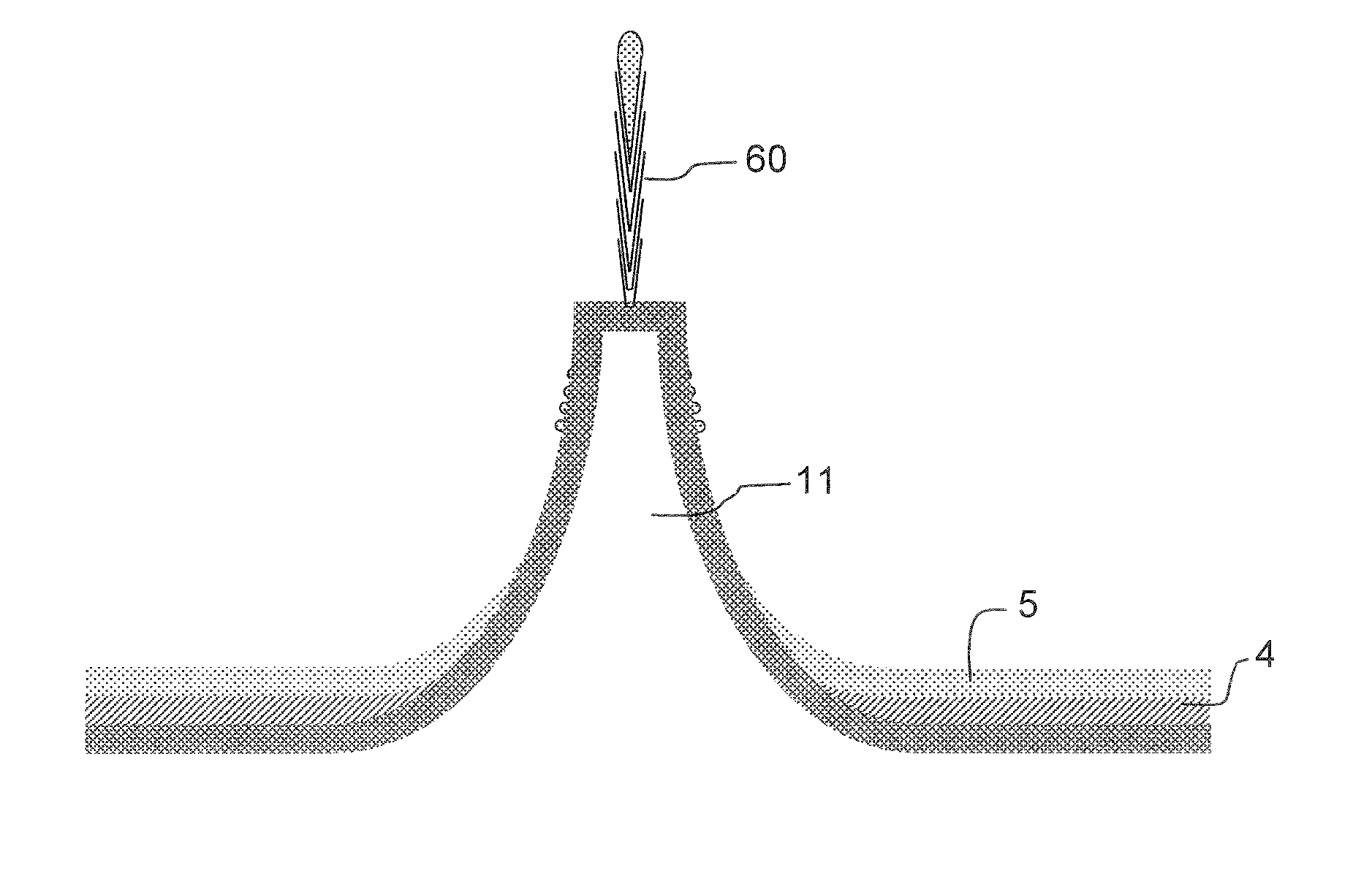Method for the Collective Fabrication of Carbon Nanofibers on the Surface of Micropatterns Constructed on the Surface of a Substrate and Structure Comprising Nanofibers on the Surface of Micropatterns
a carbon nanofiber and micropattern technology, applied in the field of collective fabrication of carbon nanofibers on the surface of micropatterns, can solve the problems of inability to control the length of nanotubes, the orientation and mechanical strength of nanotubes, and the inability to etch
- Summary
- Abstract
- Description
- Claims
- Application Information
AI Technical Summary
Benefits of technology
Problems solved by technology
Method used
Image
Examples
Embodiment Construction
[0056]We will now describe in more detail below the various steps of the nanofiber growth method according to the invention, which is illustrated by FIGS. 1a to 1h and relates to the production of a nanofiber but could equally well be generalized to a collective nanofiber production method:
[0057]Step A: Micropattern Production:[0058]a hard mask 2 of the silicon dioxide type SiO2 and / or of the nitride type SixNy, which has a behavior in terms of etching different from that of the substrate, is deposited on a substrate 1 which may be of the Si type. FIG. 1a illustrates the stack consisting of the substrate 1 covered with the etching mask 2;[0059]a photoresistive layer 3 of the resin type is subsequently deposited, as illustrated in FIG. 1b; [0060]an exposure operation schematized by the reference I, as represented in FIG. 1c, is carried out through a photographic mask M. The purpose of the exposure is to render said photoresistive layer insoluble;[0061]the rest of the photoresistive l...
PUM
| Property | Measurement | Unit |
|---|---|---|
| thickness | aaaaa | aaaaa |
| length | aaaaa | aaaaa |
| length | aaaaa | aaaaa |
Abstract
Description
Claims
Application Information
 Login to View More
Login to View More - R&D
- Intellectual Property
- Life Sciences
- Materials
- Tech Scout
- Unparalleled Data Quality
- Higher Quality Content
- 60% Fewer Hallucinations
Browse by: Latest US Patents, China's latest patents, Technical Efficacy Thesaurus, Application Domain, Technology Topic, Popular Technical Reports.
© 2025 PatSnap. All rights reserved.Legal|Privacy policy|Modern Slavery Act Transparency Statement|Sitemap|About US| Contact US: help@patsnap.com



